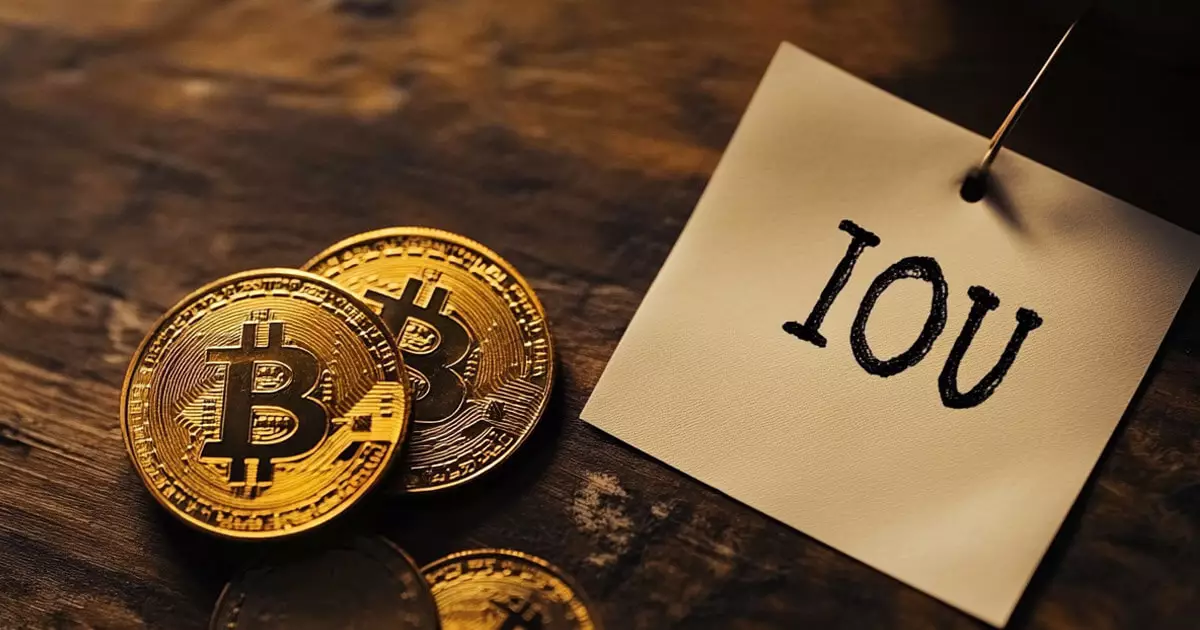In the ever-evolving landscape of cryptocurrency, especially with the growing interest from institutional investors, recent allegations against Coinbase concerning its relationship with BlackRock have stirred controversy. As claims circulated on social media regarding Coinbase’s supposed malpractices in managing BlackRock’s Bitcoin-backed ETF, key figures from both the crypto and financial sectors stepped in to clarify the situation.
The rumors that surfaced on September 16 challenged Coinbase’s integrity, suggesting that instead of utilizing funds for the purchase of actual Bitcoin, the exchange was issuing debt letters while manipulating Bitcoin prices covertly. These accusations ignited a frenzy among Bitcoin enthusiasts, reflecting a broader skepticism towards institutional interactions within the crypto arena. However, Eric Balchunas, a senior ETF analyst at Bloomberg, vehemently dismissed these claims as nonsensical. He characterized the allegations as dangerous speculation, explaining that a firm like BlackRock would have no tolerance for any misleading strategies involving their assets.
Brian Armstrong, the CEO of Coinbase, reinforced this sentiment by clarifying the mechanisms of how ETFs operate within his company. He explained that all transactions, including mints and burns related to ETFs, are ultimately settled on the blockchain. This on-chain settlement, he noted, is crucial for maintaining transparency and integrity in their processes, providing institutional clients with various options, including over-the-counter (OTC) trading. Armstrong’s assertion should mitigate concerns about any alleged mismanagement of funds. He emphasized that this infrastructure is vital for attracting institutional money into Bitcoin, a sentiment that many analysts in the crypto community echo.
Analyzing the Roots of Distrust
Two fundamental reasons appear to underpin the surfacing of these allegations. Firstly, the ongoing decline in Bitcoin prices since March has left investors seeking scapegoats for their financial burdens. Balchunas pointed out that many are looking outward rather than examining market conditions. By blaming the ETFs for their losses, investors avoid confronting the inherent volatility of their chosen asset class.
Secondly, a growing skepticism towards governmental and institutional controls has long been a staple of the crypto narrative. The parallel drawn by Balchunas to the distrust faced by gold ETFs illustrates this point; gold investors have historically labeled ETFs such as SPDR Gold Shares as “paper gold,” suggesting a lack of true asset backing. This skepticism has curiously resurfaced in the context of Bitcoin, showing how old patterns of distrust give rise to contemporary conspiracy theories, resulting in speculative criticism that highlights deeper economic fears rather than substantive regulatory infractions.
In tandem with these broader concerns, Coinbase’s newly launched synthetic Bitcoin product, cbBTC, has come under scrutiny. Its rapid ascendance to a market cap exceeding $100 million on launch day raised eyebrows, particularly from Tron founder Justin Sun. Sun’s critique cited a lack of proof of reserves and warned that users could suffer the repercussions of central bank interventions, emphasizing the precarious nature of centralized custodianship in storing Bitcoin.
While some industry figures raised legitimate concerns about centralized models in a decentralized ecosystem, it’s essential to assess the validities of such criticisms. Armstrong, in defending cbBTC, acknowledged that users indeed have to place trust in centralized custodians. This admission reflects a reality many in the crypto community grapple with; the very systems meant to stabilize and facilitate access to Bitcoin can ironically become vectors of distrust if not executed transparently.
Conclusion: Navigating the Future of Crypto Investments
The discourse surrounding Coinbase and BlackRock is indicative of a larger narrative within the cryptocurrency market—one that balances innovation with skepticism. As institutional capital continually seeks avenues to engage with digital assets, the responsibility lies not just with crypto exchanges to foster trust, but also with investors to understand the dynamics of these evolving financial instruments. In the face of misunderstanding and misinformation, a critical and well-informed approach will be essential for navigating an ever-complex landscape where trust is as valuable as the assets themselves.
















Leave a Reply